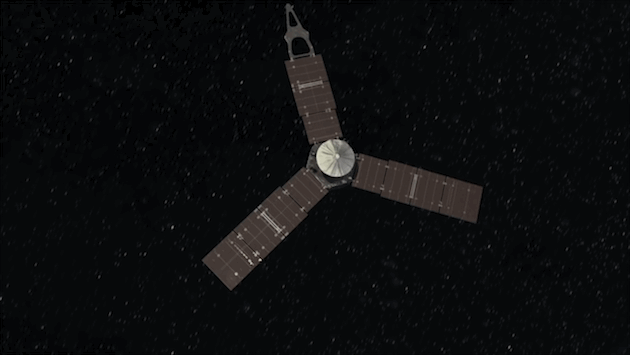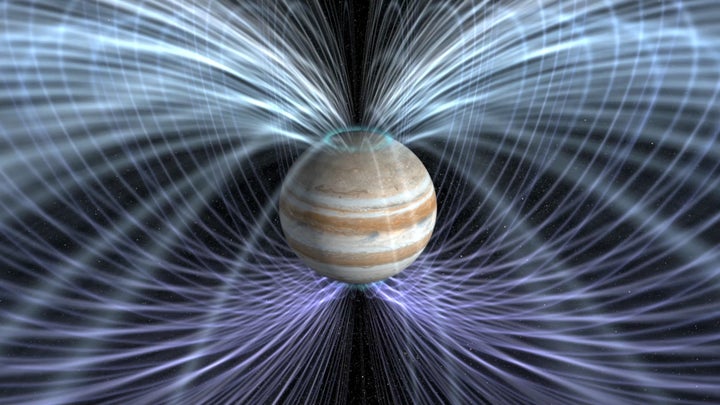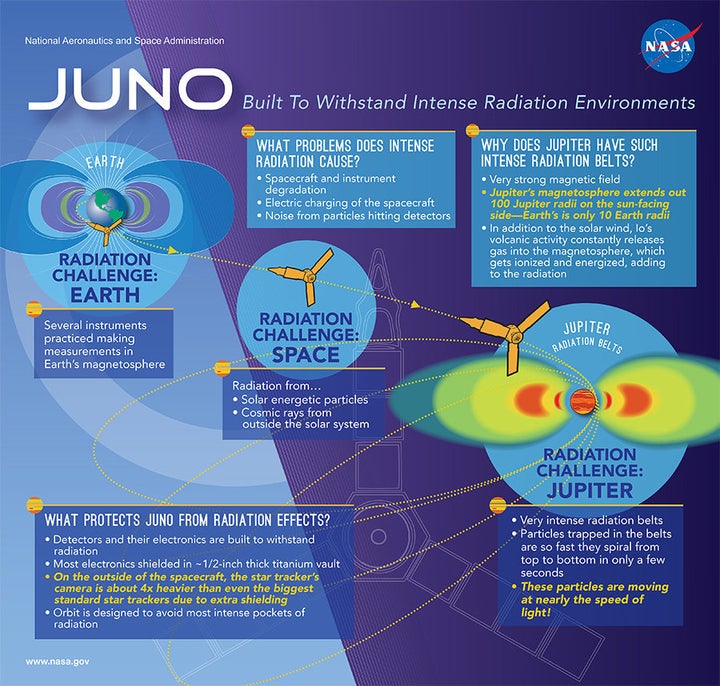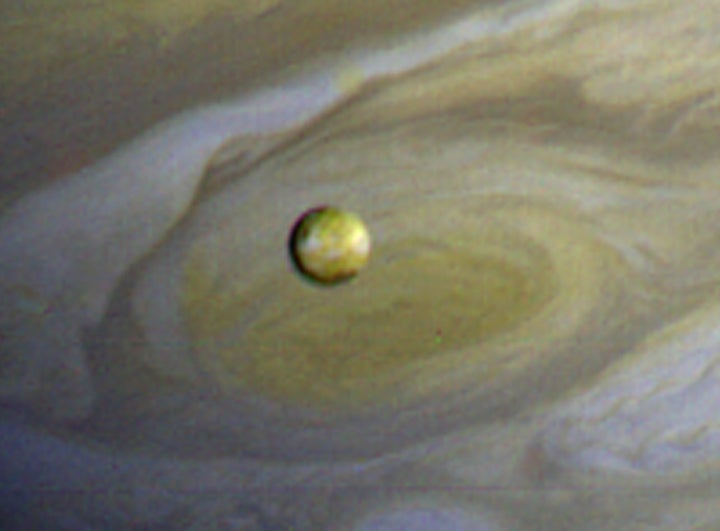NASA's Juno spacecraft has successfully entered orbit around the gas giant Jupiter.
After five years and 1.7 billion miles the tennis court-sized probe needed to accomplish a risky braking manoeuvre in order for it to be hooked by Jupiter's gravity.
In the early hours of this morning the team at NASA's Jet Propulsion Laboratory, California received the confirmation signal which confirmed Juno had finally entered orbit.
Juno is now officially the farthest solar-powered spacecraft from Earth and will begin a two-year mission of discovery which will help scientists better understand one of the largest objects in our solar system.
Using Juno's complex array of cameras and sensors the team hope to answer some long-awaited questions including whether Jupiter actually has a solid core or if it really is just a swirling ball of gas.
Another focus will be the Great Red Spot - a massive storm several times the size of Earth that has been raging on the surface of Jupiter for what appears to be hundreds of years.

Meet Juno
Juno is an astonishing spacecraft that has accomplished a great number of firsts for NASA.
It is the first solar-powered spacecraft to reach Jupiter, it will also be the closest that any spacecraft has ever got to Jupiter's surface (2,600 miles).
It's also the fastest spacecraft to ever enter orbit around a planet, travelling at an astonishing 130,000mph by the time it reaches the gas giant.

Juno has a tough life ahead of it though, in fact even now its systems are beginning to break down and over the next two years it will die a slow and complex death.
So what's killing Juno? Radiation.

With the largest magnetosphere in the solar system, Jupiter's radiation belts are 18,000 times stronger than those found around Earth.
High energy particles spin around the planet in a matter of minutes creating a environment that would prove lethal to humans and just as deadly to Juno's precious components.

To try and protect the spacecraft NASA has nestled its most precious equipment inside a titanium vault, while a specially built camera (some 4x heavier than the standard cameras used) should be able to withstand the radiation for a while.
Even then NASA only expects the camera to survive for a few months before the images become unusable.
Meet Jupiter

Jupiter is a giant ball of gas that's 11 times wider than Earth and some 300 times more massive.
It takes 12 years for Jupiter to orbit the sun and yet rotates so quickly that a single day lasts just 10 hours.
In many ways Jupiter has its own small solar system. Its composition is very similar to that of a star: hydrogen and helium, while its sheer size means that it has four large moons (Io, Europa, Ganymede and Callisto) and over 60 smaller objects known to be in orbit.

While you can't normally see them, Jupiter also has a huge system of rings much like Saturn.
There is much however that we still don't know about Jupiter and so Juno's mission will be to ask just some of the questions that we still have such as:
- How did Jupiter form?
- How much water or oxygen is in Jupiter?
- What is the structure inside Jupiter?
- Does Jupiter rotate as a solid body, or is the rotating interior made up of concentric cylinders?
- Is there a solid core?
- What do the poles look like?

